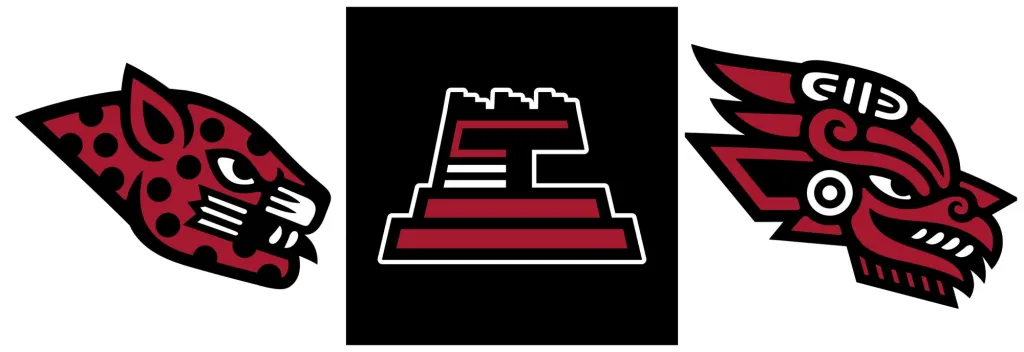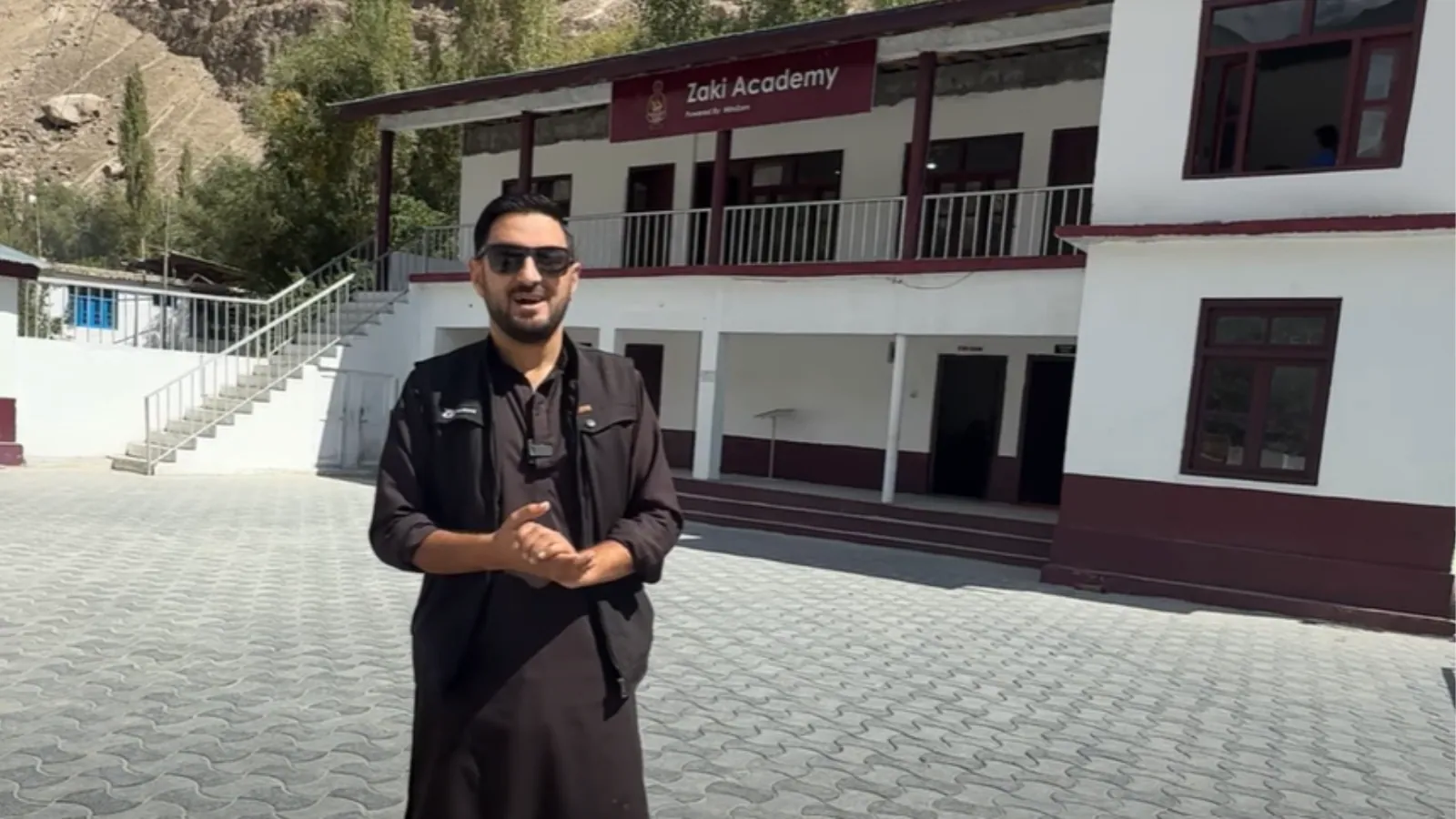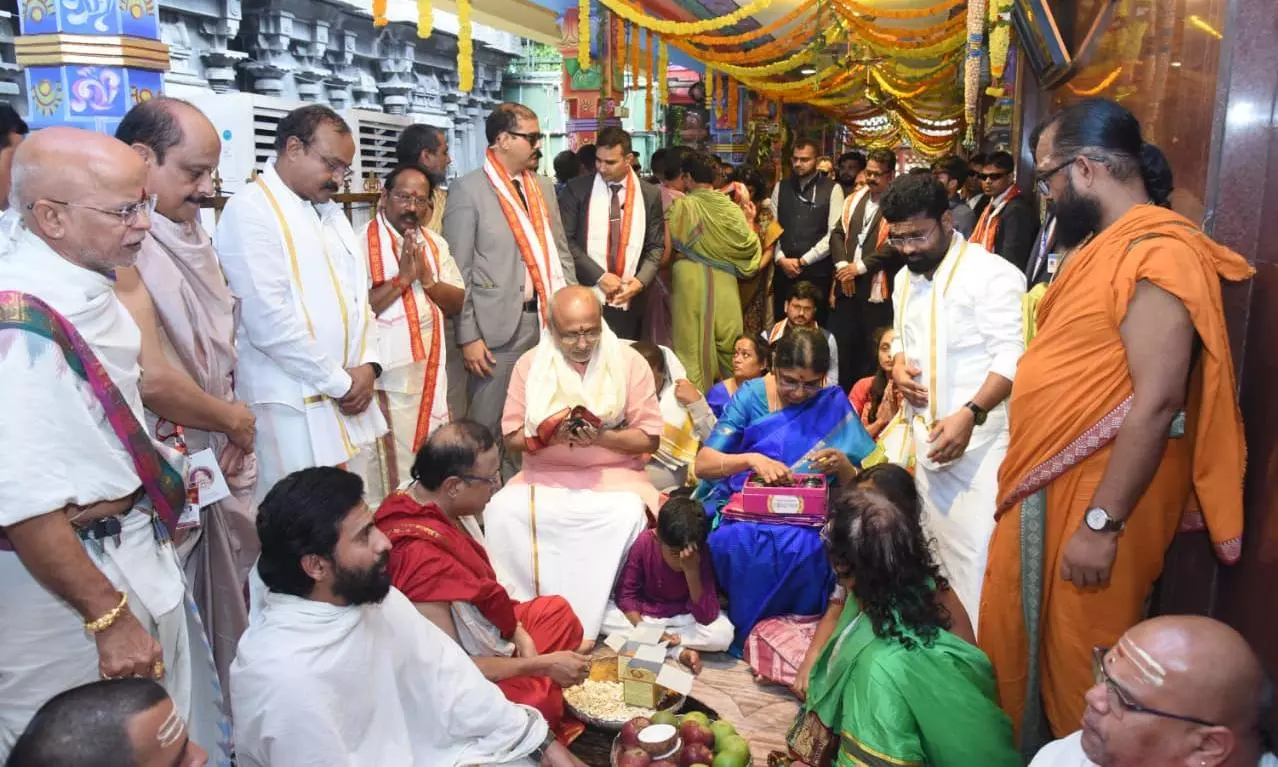
Introducing Ehecatl, Ocelotl and Calli.
Meet your new San Diego State Aztecs logos. Wind, jaguar and house.
On Thursday, the university formally unveiled the results of a six-year project to identify iconography that is historically reflective of the Aztecs’ culture while aligning with the school’s pillar values.
Translation: After President Adela de la Torre quietly “retired” the controversial Aztec Warrior mascot in 2020, the university wanted to “create a new set of Aztec brand symbols that will re-energize the SDSU brand” while not abandoning the Aztecs name or the interlocking “SD” logo.
“Part of us wanting to do this,” Athletic Director John David Wicker said, “has been this notion that, ‘They took the Warrior away, now they’re going to take the Aztecs name next.’”
“This reinforces that we’re not,” he added. “We’re the Aztecs. President de la Torre has learned into that. It’s who we are.”
Chaired by anthropology professor Ramona Perez, The Aztec Identity Initiative studied the Aztec sun stone (calendar) and identified symbols that represent mind, body and soul. Ehecatl (wind) represents Quetzalcoatl, the god of intelligence and self-reflection; Ocelotl (jaguar) represents Tezcatlipoca, the god of the night sky, ancestral memory and time; and Calli (house) represents Tepeyollotl, the god of animals, caves, echoes and earthquakes.
Their work was vetted by Mesoamerican experts at Cornell, the Harvard Divinity School and the Los Angeles County Museum of Art. Mexican illustrator Noe Silva adapted the symbols for SDSU.
There are scarlet and black versions that sports teams will likely use as secondary marks, appearing on the neckline of a uniform or perhaps on practice shirts. There are also full-color variants with different shades of teal plus a yellow called “golden” that the university, which recognizes teal as an official color in addition to scarlet and black, will use.
“Teams within athletics can determine which of them they want to use,” Wicker said. “I don’t envision it being a primary mark on the front of a uniform, like, for example, the duck at Oregon. I don’t anticipate that, but maybe things will change in the future.”
And in the absence of an official human or animal mascot, could the jaguar fill that void?
“I’m not going to go there at this point,” Wicker said. “We’re going to roll these out and see how they’re received by our teams, see how they’re received in the community. If at some point we want to revisit that, we will.”
For years, SDSU’s spear-carrying mascot, Monty Montezuma, appeared in athletic logos. In 2000, the university’s Native American Student Alliance formally objected to its lack of cultural sensitivity.
That led to the 2004 creation of the Aztec Warrior, a purportedly more historically accurate representation. A non-binding resolution by the campus senate in 2017 urged retiring the mascot, leading interim president Sally Roush to form a 17-member task force that further examined the issue.
A year later, she issued a report that resolved to keep the Aztecs name but find “a much more dignified and appropriate demeanor” for a mascot. That prompted Wicker and others at the university to begin exploring more authentic iconography.
Then in 2020, with no fans at sporting events during the pandemic, de la Torre quietly eliminated official association with the Aztec Warrior. Most didn’t realize it until spectators were allowed back the following year and the mascot was not, although he will occasionally appear at events as a paying customer.
“We recognize that we do not own any elements of the culture surrounding the people of the Aztec empire,” a slide presentation accompanying the logos’ release said. “Rather, we are inspired by what we have learned and choose to align ourselves with the best aspects of Aztec culture and society.
“When we say, ‘We are Aztec,’ we mean WE ARE AZTEC-LIKE, not we are literally Aztecs.”



